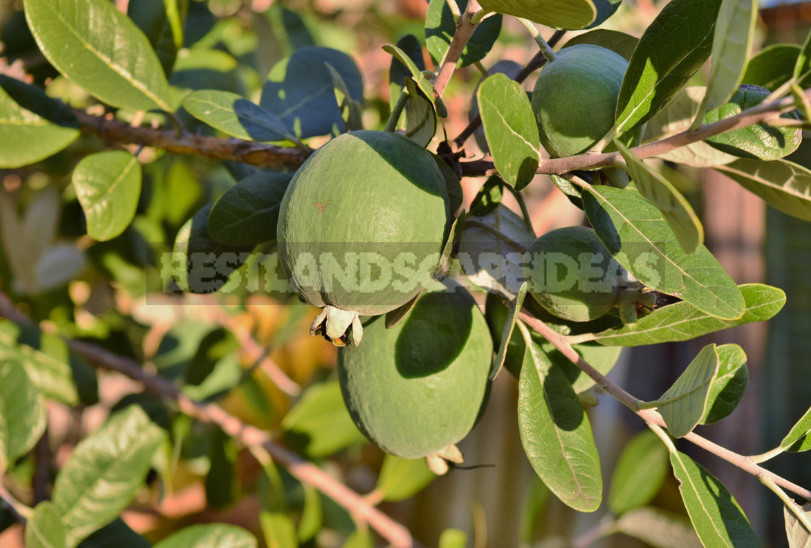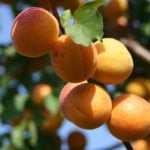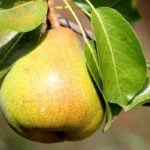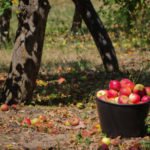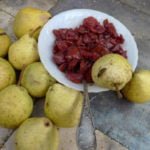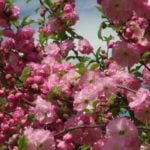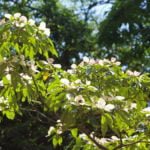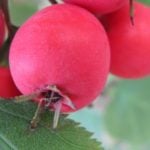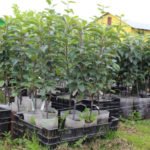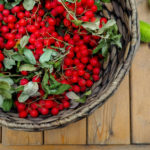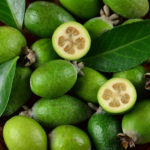Exotic plant feijoa is of increasing interest to gardeners. And all thanks to the fact that in stores and markets are increasingly began to appear its fruits — unusual green berries with original taste and smell. The natural habitat of this culture is Brazil and Northern Argentina, but now it has successfully taken root in New Zealand and some areas of the cool subtropics of the Northern hemisphere. Berries many managed to try and even love, and what is the plant itself, is not known to everyone.
Botanical reference
From the point of view of botanists, feijoa (Acca sellowiana) is an evergreen shrub or low tree of the genus Acca family Myrtaceae, which recently stands out in a separate genus Feijoa sellowiana.
In its natural form, the plant was first discovered by Europeans in Brazil in the late XIX century and exported to France in 1890. Culture typical of the subtropics to the South and North of this geographical area is not making much headway.
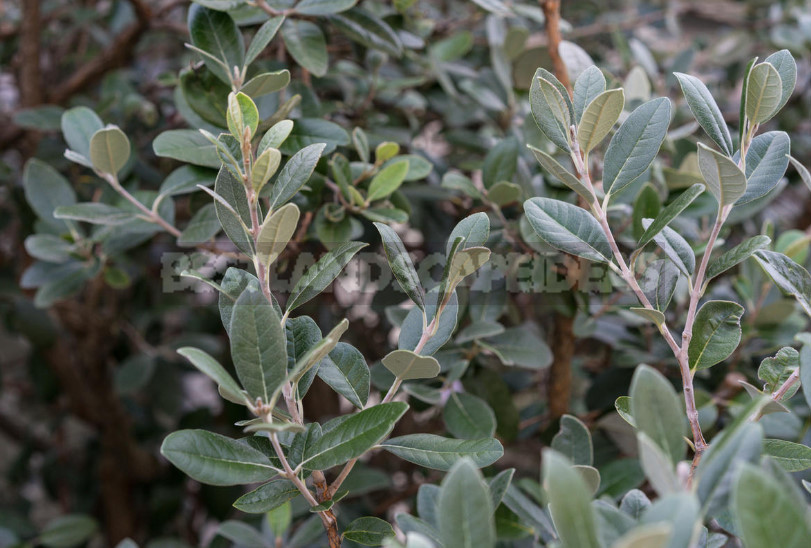
Grows slowly, in adulthood reaches 4 m in height and the same size in width, lives up to 45 years. The wood is dense, hard and brittle, the bark of Mature branches is rough, has a pale brown color. The upper surface of the leaf plate is smooth, pale green, slightly pubescent below, bluish hue. The root system is compact, located in the soil surface.
The plant begins to bloom at the age of 4-5 years. Flowers bisexual, arranged singly, in pairs or several pieces in corymbose inflorescence. Flowering occurs depending on where the plant lives: in the southern hemisphere — in December, in the North — in may-June. The main pollinators of this culture are insects, but some contribution is made by birds, which are attracted by sweet petals. Birds, eating them, also participate in pollination.
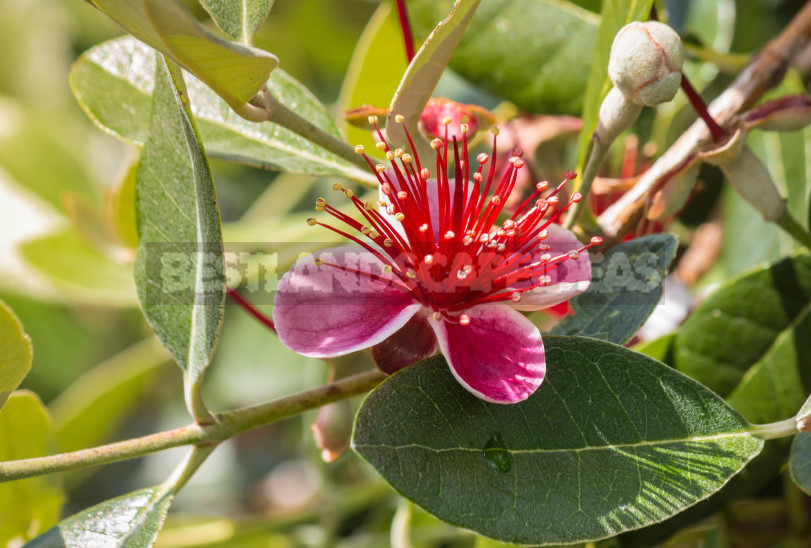
Ripe berries have an oval or elliptical shape with preserved sepals, the color is dull green, in length reach from 20 to 80 mm. the Specific flavor and taste of the flesh resemble strawberries, pineapple and kiwi. Bright and smell have even unripe. To date, quite a lot of varieties have been bred, so the size of the berries, their taste and color may vary markedly.
Cultivation
Alas, for most of the cultivation of such a wonderful plant on your site will not be available. As already mentioned above, the climatic conditions of feijoa require very specific, in particular, frosts below -10°C, it will not stand. This crop is grown outdoors in Azerbaijan and Georgia.
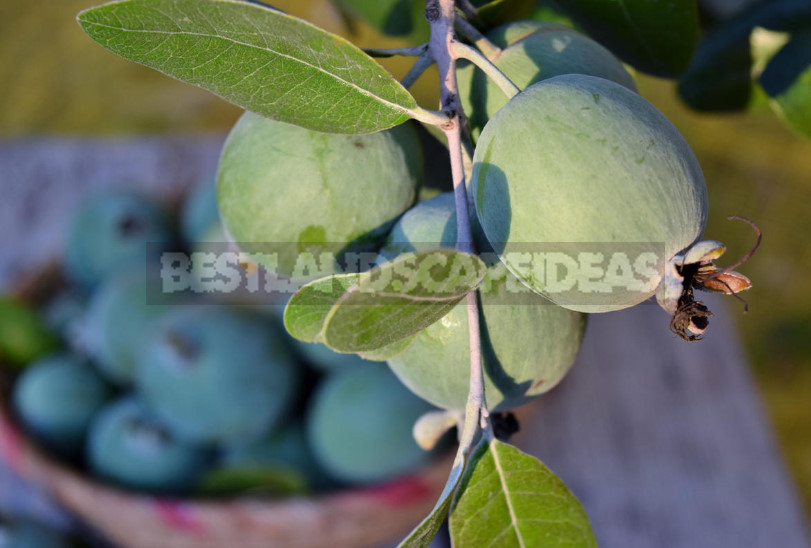
But this is not the final verdict for the summer residents of the middle lane! Fans successfully grown small shrub feijoa as tub plants. To do this, it is convenient to take self-pollinated varieties or cross-pollinated, but then you will need to plant at least 2 plants.
Feijoa is necessary to provide a light permeable soil. Dry air apartments plant tolerates quite well, but needs spraying. The soil should always be moderately moist.
In summer feijoa can be exposed to the open air, and for the winter to bring in a room with a temperature of 10…+12°C-this is the optimal mode, but to survive the cold exot can in a winter garden with a higher temperature. It should be borne in mind that this plant is light-loving. For well-being, he will need additional lighting from mid-October to March.
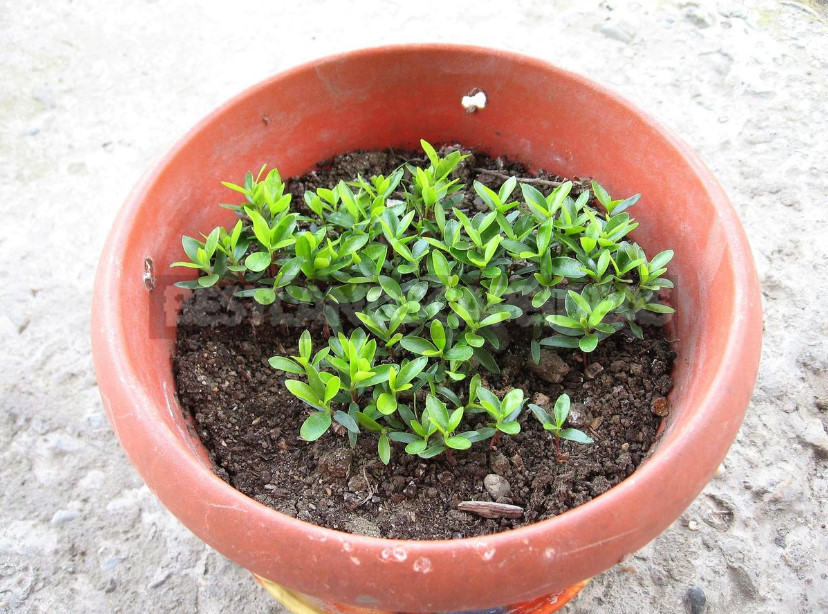
For breeding use seed propagation and cuttings. From the seeds to grow feijoa easiest, but as a result you can not confidently get the plant that you expect: varietal characteristics with this method of breeding are split very much.
Cuttings-a reliable way, but more complex. This is best done in November or December. Well take root cuttings with 3 kidneys, taken from the middle and upper part of the young shoots. Before planting, remove the lower leaves, soak the twigs in the root stimulator for 12-18 hours, and then planted at a slight angle in a light substrate. Cuttings are covered with a jar and wait for rooting, daily ventilating and maintaining the soil moderately moist.
Plants grown from seeds begin to bear fruit for 5 years, and those that are obtained by cuttings — 3-4. It should be borne in mind that for good fruiting requires regular feeding. From an adult Bush grown in a tub, for the season you can collect 2-3 kg of excellent berries.
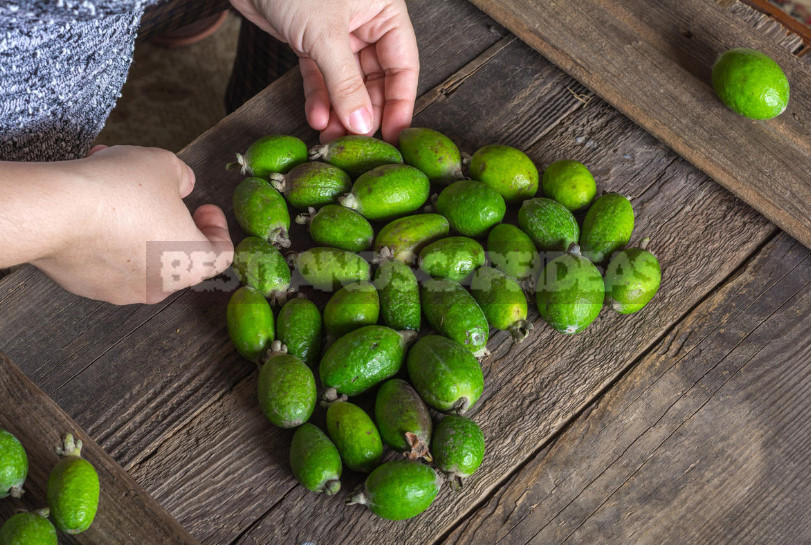
However, not everyone will take up this matter on their own. Most of us prefer to buy feijoa.
How to choose feijoa
According to the rules, the crop is harvested from the ground, spreading the fabric under the tree and vigorously shaking it. However, ripe berries to be transported is extremely difficult, therefore, to send to distant regions of the tear unripe guava. Stored fresh ripe berries in the refrigerator for no more than 10 days, then their quality is sharply reduced.
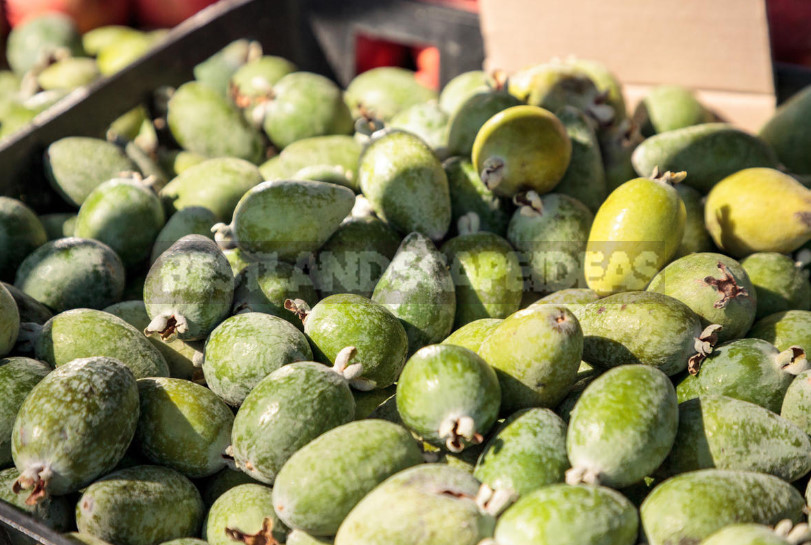
Choose feijoas need to carefully and is better to buy on the market: the seller will not deny you the request to cut the berry to see what it looks like in the flesh. In a quality ripe fruit, it should be translucent. Allowed and white color-this means that feijoa is not ripe, but at room temperature will reach the desired condition for 2-3 days. The brown pulp says that the goods are spoiled.
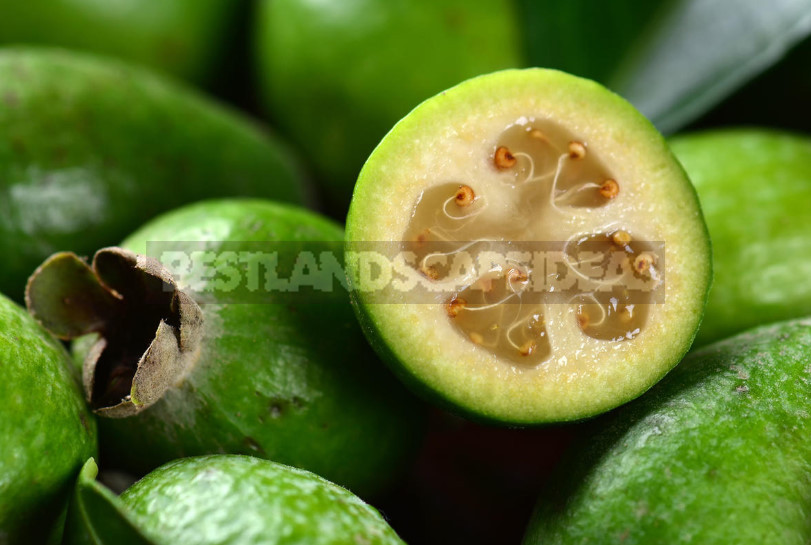
The skin of the ripe berries is matte, with good turgor, noble wrinkles are possible. Do not be afraid and gray plaque — a natural wax that protects the berries from damage. Shiny and smooth surface-a sign of unripe fruit. If you cut a berry is not possible, you should, at least, not to take those fruits that have obvious scratches, brown spots and dents.
I hope that now you will have fewer questions and doubts when you are going to buy feijoa. It would be very interesting to read the reviews of southerners who grow this interesting and useful plant on their site.
